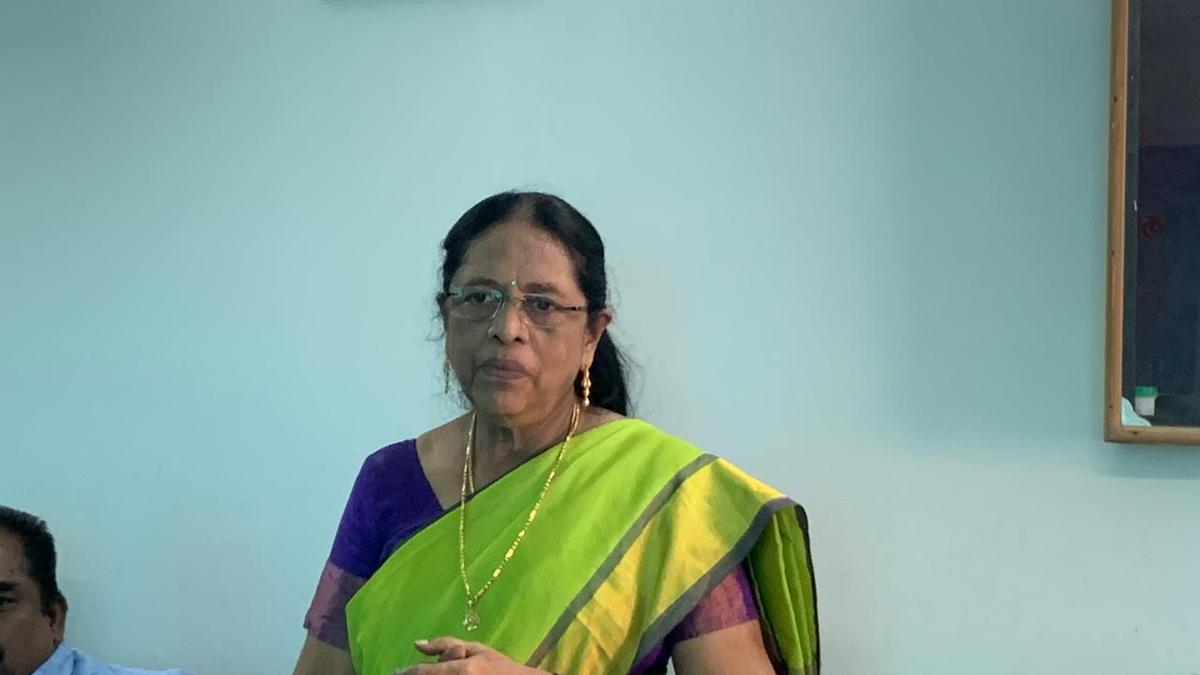Commendable work: Virgil D. Sami started Arunodhaya Centre for children working in factories. Within a year of its launch, many children were brought out of work and enrolled in a bridge school.
“The image of the children coated in metal dust with yellow eyes, wearing only a trouser, is seared into my brain,” says Virgil D. Sami, 67, executive director of Arunodhaya Centre. She knew then that she should continue working with children to eradicate child labour. “From a very young age, I was interested in social work. I joined the NSS at school, and then I went for my Masters in Social Work,” says the Chennai-based child rights activist.
Survey of children
In 1979, while searching for a job, she met Lore Termehr, a German national who wanted to work with child labourers. “In those times, child labour wasn’t considered a problem. So we started a survey of children on the street who were rag-pickers or domestic workers. We worked with them to bring them out of it,” she adds. But the process was gradual as they needed to have access to education. They started evening schools so that the children would work in the morning.
When the Supreme Court ordered a survey of child labour, Ms. Virgil co-founded a network for child workers in Asia. This brought together organisations working to eradicate child labour for global solutions. “It was in 1992 when Lore wanted to retire, and I was at the crossroads. I realised that I wanted to stay. I wanted to show that child labour should be eliminated at any cost,” she adds.
Hub for factories
She founded Arunodaya Centre. The 1979 survey showed that nearly 53% posts in the metal factories were filled with children. “We started at Korukkupet because I wanted to create a model life: child labour can be eradicated in the face of poverty. Korukkupet also had a lot of metal factories and there was no non-governmental organisation there. The remote area lacked transport and amenities,” she says.
Arunodaya Centre started with the children working in factories. Nearly 500 children would attend the evening school. “Within a year of its launch, a lot of children were brought out of work and enrolled in a bridge school. Five bridge schools were started initially and the number went up to 10. From the bridge schools, the students were enrolled in mainstream schools,” she says.
Help from the State
This shift had its own issues. For example, some teachers refused to work with them and the other students could not accept them. But the Tamil Nadu government’s Education Department stepped in and helped, she says. Today, Arunodaya Centre works with children, women, teachers, and the community to form their voice and find their space. “We believe in community empowerment and changing the attitude of the people. We have come to address various issues, from drug abuse among children to the attitude of parents,” she says. Arunodaya Centre has also started Children Nagar Sabhais for children to discuss issues that affect them and find solutions. “Children should be listened to, given space, and involved. We can see the change in their attitude,” she says.
Published – February 16, 2025 10:46 pm IST
